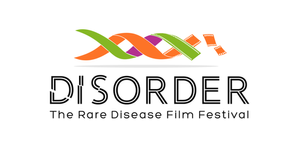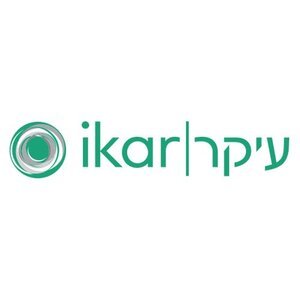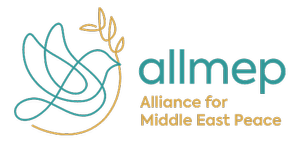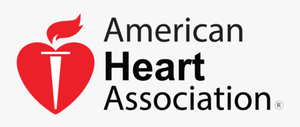Recent Tips
Elevate your expertise with Lisa’s Weekly Tip! Dive into exclusive insights delivered straight to your inbox every week. Join our community of learners today and unlock the power of knowledge. Subscribe now to receive weekly tips!
Your board is well-connected – ask them to open doors and introduce new opportunities for the organization.
Wherever you ask for a gift paid by credit card, always include an option to pay via a DAF. Always.
Your donors may have skills in tech, strategy, and more. Don’t just ask for money – ask for their expertise!
Avoid donor fatigue by skipping constant donation requests or urgent, guilt-driven messages. Focus on meaningful engagement instead.
Don’t just ask for money – invite passionate individuals to share your passion for the mission.
Respect your audience by asking their preferred communication channels—don’t bombard them with unwanted emails!
As many as 1 in 4 donors are using DAFs to give. Understand them. Facilitate them. Welcome them.
Want to increase the size of your donor base? Look to your volunteers.
Set Google alerts for your donors and volunteers to recognize their accomplishments.
Make donating easy! Don’t force donors to log on to your website to give.
At in-person events, make sure every guest is acknowledged.
A quick five-minute Google search can make the difference between deeply connecting with a donor and missing the mark.
If you don’t know who a prospect is other than how much they’re “worth”, don’t bother meeting with them.
Categorize your monthly donors’ contributions as annualized! This means viewing a $50/month donor as a $600/year donor.
Never assume that you know a donor as a person solely based on their financial capacity.
The ideal of blended gifts seems so logical. Why is the system set up so donors stay in their “lane”?
Great, sustainable nonprofits are those that celebrate when donors volunteer and/or when volunteers donate.
It’s critical to be authentic and true to your values when working for a given NPO. If it’s not a fit, look elsewhere.
Be careful about the words you use. Without context, many donors will think a “planned gift” is just a gift that they PLAN to give.
Happy, engaged board members are those who are given an opportunity to contribute beyond the financial.
Always be able to deliver a succinct “elevator pitch” about your organization and what it actually does.
Treat your fundraisers as professional, collaborative partners and embrace their passion for your mission. Not doing so is disrespectful and counter-productive.
Millennials (& increasingly, Gen-Z) are a valuable donor base. Treat them as such! Don’t fall for the stereotypes that suggest that younger generations are broke, lazy, or have short attention spans. Research shows that they are passionate, engaged, and ready to support causes they believe in.
Use storytelling with words, images, or videos to deeply engage your donors. This emotional connection not only boosts support for your cause but also makes donors feel like an integral part of the solution!
Make sure your marketing materials (digital included) demonstrate that you not only recognize DAFs and are happy to work with them, but also that you’re aware of the rules governing their use.
Lots of new donors are beginning to give, and they don’t know that the organization develops expectations based on that first gift. If we expect a gift the following year, shouldn’t that first gift be promoted as a “subscription”?
Make it a practice to ALWAYS check all the links in anything you send out. Ensure that they direct to the exact page relevant to your information. If you’re not 100% accurate, you risk receiving unsubscribe messages.
If you’re a supporter of a nonprofit and they don’t offer recurring giving, ask them why not. Not offering donors a recurring/monthly giving option is doing a disservice to the organization.
When you buy a list and use the names to send a “personalized” (yet unsolicited) email, it’s best to check your system to make sure that the names on the email itself match the person’s email that it’s going to. Today I was “Jasper”!
Intense pressure tactics are not productive in the long term, and they do not align with the true essence of giving, which should be rooted in authentic relationships. For instance, a colleague shared a concerning incident where their elderly family member was hospitalized due to persistent and forceful pushing.
When pitching or meeting a new prospect, embrace the opportunity to express your passion for your work! Don’t hesitate to share what drives you.
When pitching or meeting a new prospect, embrace the opportunity to express your passion for your work! Don’t hesitate to share what drives you.
No parent wants to feel like they’re an ATM for their kids. Donors feel the same way—who wants to feel like they’re merely a nonprofit’s ATM? Short-term thinking doesn’t serve us well.
Did you know that many first-time donors are unaware that organizations often expect subsequent donations, typically for larger amounts, in the following calendar year? How would a donor new to giving know about this expectation?
The concept of ‘owning’ a donor is outdated, offensive, and unproductive. Let’s discard that notion altogether.
If you’re still spending tons of money designing, printing, and sending your annual reports, please stop. Do it digitally and print it out for those few donors who want it on paper. Most donors today want their money to go to programs or to sustain the organization, and they’ll resent your spending their donations on printed annual reports that often end up as doorstops.
Are some of your board members not contributing enough? Try this approach: Provide each board member with a list showing the amount contributed by each member, arranged from highest to lowest. Avoid identifying individual board members on the list, but make sure to identify the recipient of the list. This allows them to see how their contributions compare to others on the board. This method often prompts board members to increase their contributions or consider resigning.
Yes, fundraisers are often intimidated by donors. But did you know that many donors are intimidated by fundraisers? Donors may not be familiar with concepts such as the ‘donor pyramid’ or the strategies employed by fundraisers. When encountering something unfamiliar, they’re unlikely to inquire further and may simply withdraw their support. Like most people, donors dislike feeling uninformed.
When sending an email thanking attendees for their presence at the gala and highlighting key moments from the event, please ensure it is only sent to those who actually attended. For those who sponsored but did not attend, consider crafting a slightly different message that is relevant to their support.
When presenting a matching gift opportunity to your donors, ensure clarity in your instructions on what actions you’re requesting from them.
Is there a specific reason why I can’t serve as both a volunteer and a donor? Is volunteering frowned upon, especially for major donors? Doesn’t this seem illogical?
Could people avoid giving ‘in memory of’ gifts due to concerns about being added to mailing lists without consent? If I want to honor someone who passed, I shouldn’t have to worry about being added to a solicitation list without being asked, right?
It’s a great practice to send a thank-you email to all guests promptly after a fundraising event. However, if your personalized form letter says ‘thanks for attending,’ ensure the person actually attended.
If you are acquiring names for email outreach with the hope that recipients will become donors, ensure that your email clearly communicates your NPO’s purpose. A way to prompt a recipient to delete your email is to assume that they know who you are.
Don’t assume that donors want to be contacted for contributions in December. If you have an authentic relationship with a donor, you’ll know their preferred time of year to make contributions.
Does using “Today is Your Last Chance” in an email bring in funds? It sounds morbid. (And, of course, it’s not true…) Maybe say, “Our budget is finalized today. Your gift allows us to help more people this year.”
Giving the same amount of money every year (to a specific NGO) isn’t such a bad thing, is it?
Don’t assume that a donor wants a big book or expensive gift from you. Ask them how they like to be thanked and honor that. Otherwise, you’re wasting precious money that’s needed elsewhere.
Having a Donor Advised Fund or Foundation doesn’t mean that a donor is “parking” their money. It might, but it also might not. Don’t assume.
Printing ‘RENEWAL NOTICE’ in red on your direct mail letters and sending them to people who have never donated to you can deter potential donors. They are also likely to remember your organization’s name, but not in a positive way.
Stay informed and inspired with Philanthropy 451, Lisa’s bi-weekly newsletter that covers a wide range of fundraising topics, delivering engaging insights and actionable strategies. Subscribe today to elevate your understanding of the world of giving. For an enhanced experience, become a premium member to access exclusive content and participate in a monthly Power Hour with Lisa Greer.
Subscribe to Philanthropy 451 and amplify your impact!














